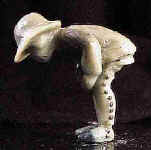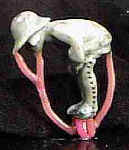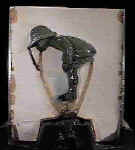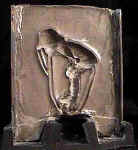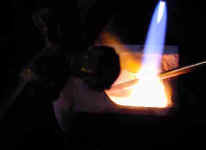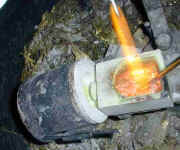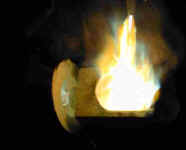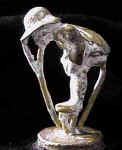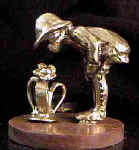![]() Click on links below to go to those
pages!
Click on links below to go to those
pages!
Email Us
sculptor@castofcharacters.com
Pictures of Hardware in Client's Homes
Patina and Nickel Plating now available for Bronze items!
Examples of Nickel Plated and Patina pieces
Individual Animal Pages (not cat or dog)
Individual Mythical Animal Pages
Link to Terry's Beautiful hand painted cards
Pet Pendants, with or without Clickers
NEW! Fox Hunt (and Dog and Misc.) Bronze Buttons
Horizontal Pet (mostly dog) Pulls
Letter Openers (mostly Dog)
Dog Wall Mounted Bottle Openers
Solo Door Knockers (mostly Dog and Cat)
Dog Small Door Knockers / Cabinet Pulls
Dog Breed Towel or Curtain Rods
Dog Toilet Paper and Paper Towel Holders
Horse head items (clickers, etc.)
Animal Head Deluxe! Finger Pulls
Animal Wall Mounted Bottle Openers
Wildlife Animal Small Door Knockers
Animal Toilet Paper and Paper Towel Holders
You can pay instantly with PayPal by using this link: paypal.me/castofcharacters
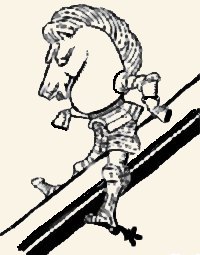
1. Wax Pattern
(click on pictures to enlarge them)
1. The figure is carved in solid wax by the sculptor (in this case, M. A. Dabritz). This is called the "wax" or "pattern".
|
2. Wax Pattern with Casting Sprues (wax pathways) (click on pictures to enlarge them) |
2. Sprues (wax "wires") are attached to the pattern. These will burn away to form channels through which the wax leaves the mold and also through which the molten metal enters it.
|
3. Ceramic Mold (investment) ( Cut-Away View ) (click on pictures to enlarge them) |
3. A ceramic slurry ("investment") is poured around the wax pattern and allowed to harden around it like plaster. This surrounds the pattern completely, the picture shows a cut-away view so you can see what is happening on the inside of the mold.
|
4. Ceramic Mold After Wax Evacuation ( Cut-Away View ) (click on pictures to enlarge them) |
4. The wax is "burned out" in a kiln at 1250° F (orange hot), so that it goes up in smoke and leaves its impression in the ceramic. This creates the mold. Hence the term "Lost Wax" because the wax is gone.
5. Metal is melted and to be forced into the cavity left by the wax.
(click on pictures to enlarge them)
The first picture shows the torch melting the bronze rod into a ceramic crucible.
The second picture is taken with a flash so that you can see the cylinder that used to contain the wax pattern, before it was burned away. Now it is the mold into which the metal is forced.
The third is taken just after the flux has been added to the molten metal to help remove impurities and to make it flow more easily into the mold. The flux makes a little smoke.
When the metal is thoroughly molten, the centrifuge is spun (in this case) to force the metal into the mold so that it will assume the same shape that the wax formerly had.
Molten metal can enter the mold by many different methods of casting. I use centrifugal, but could use vacuum pressure, steam pressure, air pressure, or even gravity (for larger pieces).
|
6. Unfinished Bronze Figure (With Sprues) Just out of the mold (click on pictures to enlarge them) |
6. The hot mold is plunged into cold water to disintegrate the investment so that the bronze figure(s) can be removed.
|
Finished Piece (click on pictures to enlarge them) |
7. The metal figure goes through several finishing and polishing steps to complete it.
To place an order, check our information or you can email us at sculptor@castofcharacters.com or call us toll free at 1-888-495-1090
8. To make replicas of an original, a rubber mold is made around the finished wax pattern.
9. The rubber mold is cut with a scalpel along critical "parting" lines to separate it into two parts.
10. The wax original is removed from the rubber mold leaving a "negative" impression in the flexible, reusable mold.
11. Molten wax is forced into the rubber mold, hardening into a "positive" copy of the original pattern.
12. This duplicate wax pattern is cleaned and re-detailed so it is virtually as good as the original wax pattern.
13. The duplicate wax goes through exactly the same casting and finishing process as the original pattern (steps 2-7).
To place an order, check our information or you can email us at sculptor@castofcharacters.com or call us toll free at 1-888-495-1090

Copyright © 1999 - 2017 Mary Ann Dabritz

